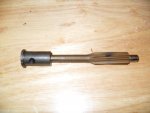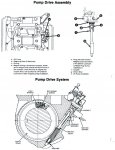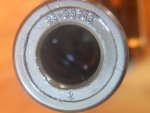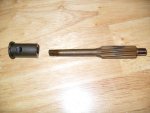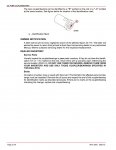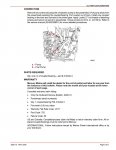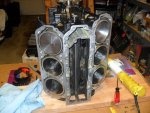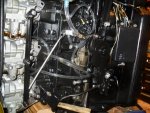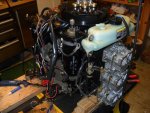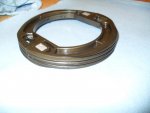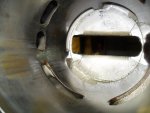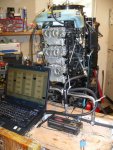Re: plastic gear on 200 h.p. Mercury xri
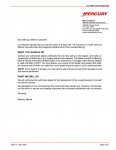
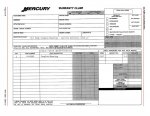
They didn't change the part number per-se but, did in fact, change a part out as indicated by a "obscure" marking/s under the same part number.........sneaky eh? So, I'm pretty sure that new marked "x" part with the SAME part number, is in fact different from what they took out and is what we are buying/receiving today, and it appears the jet motor wasn't the issue?........Must have had an issue looks like w perhaps a bad batch that only went in these motors? The bulletin never states "why" to change it though........lol. Mums the word here on what went wrong? Also wonder what the failure mode on the jets were too!!
Is the new one with the proper markings we are perhaps receiving these days in fact small in diameter as the rumor in #18 has it? And the jet's bore here was just a tad tighter or something where pulling them all and replacing them all with the infamous "X" part fixed the issue?
Anyway, this seems suspiciously relating back to post #18, thought I'd bump this/share.........Interesting eh?.
My # "2" pictured above doesn't make the cut as far as the service bulletin goes.....bummer but, I guess it's ok because it's not one of those sport jets?:facepalm: Would it had failed if it were in fact a jet of this era thou? Hmmmmmmm, the plot thickens.
It lasted 23 yrs though along w its gear

. so I guess it was okay....moot point I reckon. But as stated, I never overheated or under-oiled or went above 6K. I have a new one on order at any rate, I'll measure it and post a picture when I get it since It does appear they are all the same part number but do have different marking/s now for whatever mysterious reason.
Thicken it even more? ahhhhhh, maybe not so much....., dug this up too...call it "grain of salt 2" I suppose but, the fisrt grain appears somewhat ligit now eh?
~~~~~~~~~~~~~~~~~~~~~~~~~~~~~~~~~~~~~~~~~~~~~~~~~~~~~~~~~~~~~~~
"Here's what I've learned about oil injection after working on outboards since 1982:
2nd note while we're on the subject of oil injection, the plastic/nylon (not sure of spelling of actual material used so we'll go with that) gear used on the crankshaft is not the guilty culprit when a failure occurs. You automatically assume it is when you see the gear damaged, but in reality it's the brass bushing that causes the train crash. The brass swells from excess heat (several things cause this) and binds on the steel shaft which in turns slows the shaft down and puts a greater pressure on the nylon gear causing shearing of the nylon. Mercury Engineering chose to use a nylon gear to prevent internal damage should a steel gear fail.... and when the nylon gear fails it causes what, slight damage???"
~~~~~~~~~~~~~~~~~~~~~~~~~~~~~~~~~~~~~~~~~~~~~~~~~~~~~~~~~~~~~~~~
"Excess heat"? "Several things cause this"?.........lol, he means like turning 7K? Bad water pump? Low water pressure? Plugged water jackets? Low/No oil?..........Neglect? Cause and Effect?
So according to this guy(worked on 1, 2 or 100K+ since 1982, IDK!....."grain of salt 2", I'm just reporting the news) now it's back to the brass/bottom bushing? and not the top? But, a common thread in both here and #18!!........"overheat" and "expansion" in bushing/s binding up the shaft causing the failure. I'm sure there are other failure modes like with anything else when more variables are put into the same equation but, I think those are tending to be outliers, this "binding shaft" however seems to be the center of the bell curve and to be resonating a lil louder then the rest......IMO/research.




















